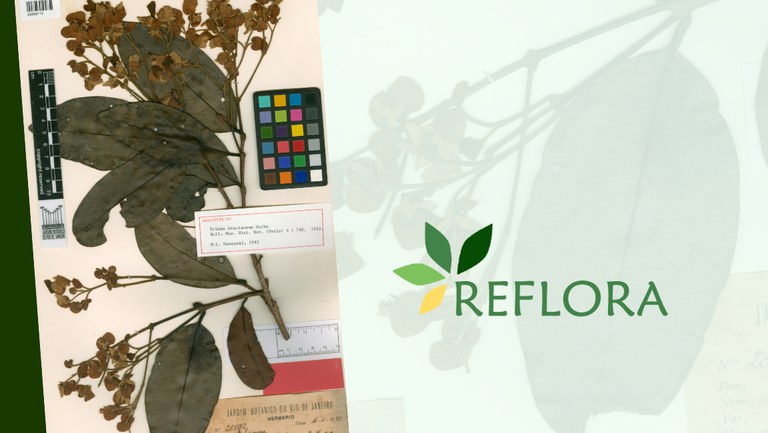Notícias
Reflora Digitization Manual version 3 presents the platform's new tools and features

The third version of the Reflora Digitization Manual was released on July 9 and is now available online. The main new features are instructions on how to use Jabot Image - a tool for managing the images captured in Jabot's partner herbaria and the Reflora Virtual Herbarium - and Jabot Transfer, which prepares and sends the images to the JBRJ AWS.
The Reflora Virtual Herbarium provides access to high-resolution images of millions of plant samples (exsiccates) that are physically stored in various Brazilian and foreign herbaria. Online access allows taxonomists to determine and typify the samples from any computer connected to the internet, without having to move from one herbarium to another, facilitating and speeding up research into the Brazilian flora. Jabot, in turn, is a biological collection management system developed by the Rio de Janeiro Botanical Garden and shared free of charge with other herbaria in the country.
In order to be published on HV Reflora and Jabot, the images of the exsiccates have to be digitally captured and uploaded to the platform - a job that involves trained technicians and fellows. Hence the need for the Manual, which explains the step-by-step process of digitization and the functionalities that have been developed to improve this process.
Jabot Image and Jabot Transfer were created in 2022 and have since been tested and improved in the RB herbarium so that they could be implemented free of charge in other Brazilian herbaria. “With them, it is possible to format the images, following the standard required by Reflora for publication, as well as manage them and monitor their sending and processing until they are displayed online,” explains Mariana Taniguchi, a scholarship student at JBRJ and first author of the Manual.
Another novelty is the recent migration of JBRJ's systems to the AWS server. According to fellow scholar and co-author Paula Leitman, “this has made it possible to receive and process images much more quickly, and also to store them in an environment with more space, a resource that is so scarce and costly for most institutions”.
The project's coordinator, Rafaela Forzza, adds that the development of these new tools was only possible thanks to the support of Faperj and CNPq through grants awarded over the last few years, and also the grants funded by L'Oréal, through the Non-Monetary Benefit Sharing Agreement (Biodiversity Law No. 13.123/2015). “The publication represents a great achievement for national institutions, which previously depended on a paid program, developed outside the country, and which no longer provided licenses and support. With these new tools presented in the manual, we hope to make life much easier for all our partners when it comes to capturing and sending images,” concludes the researcher.
The Reflora Virtual Herbarium, coordinated by JBRJ, is one of the results of the Reflora Program launched in 2010 by CNPq. HV Reflora was launched in 2013 and currently has 85 published collections and more than 4.4 million images available, of which approximately 157,000 are of nomenclatural types.